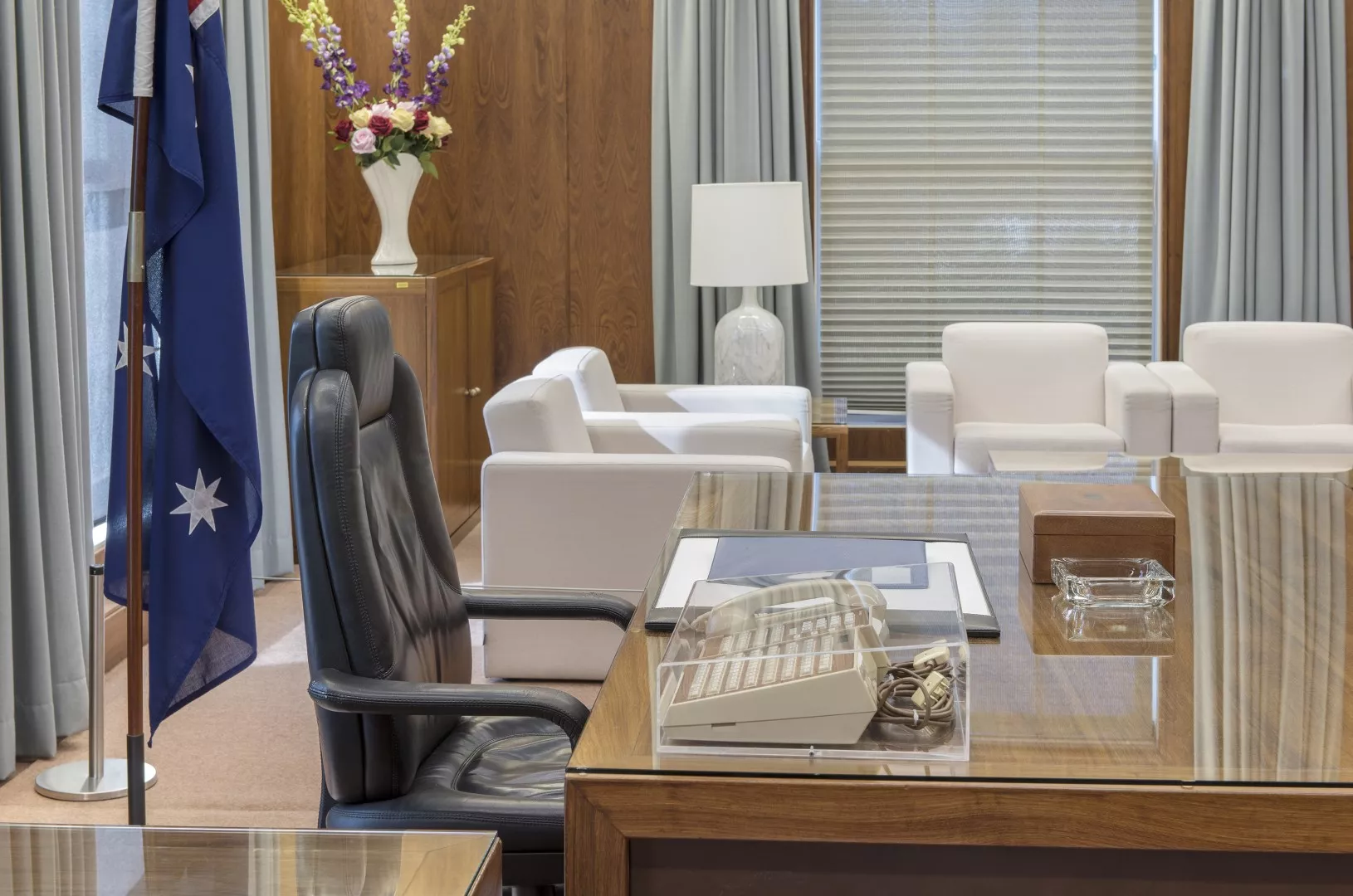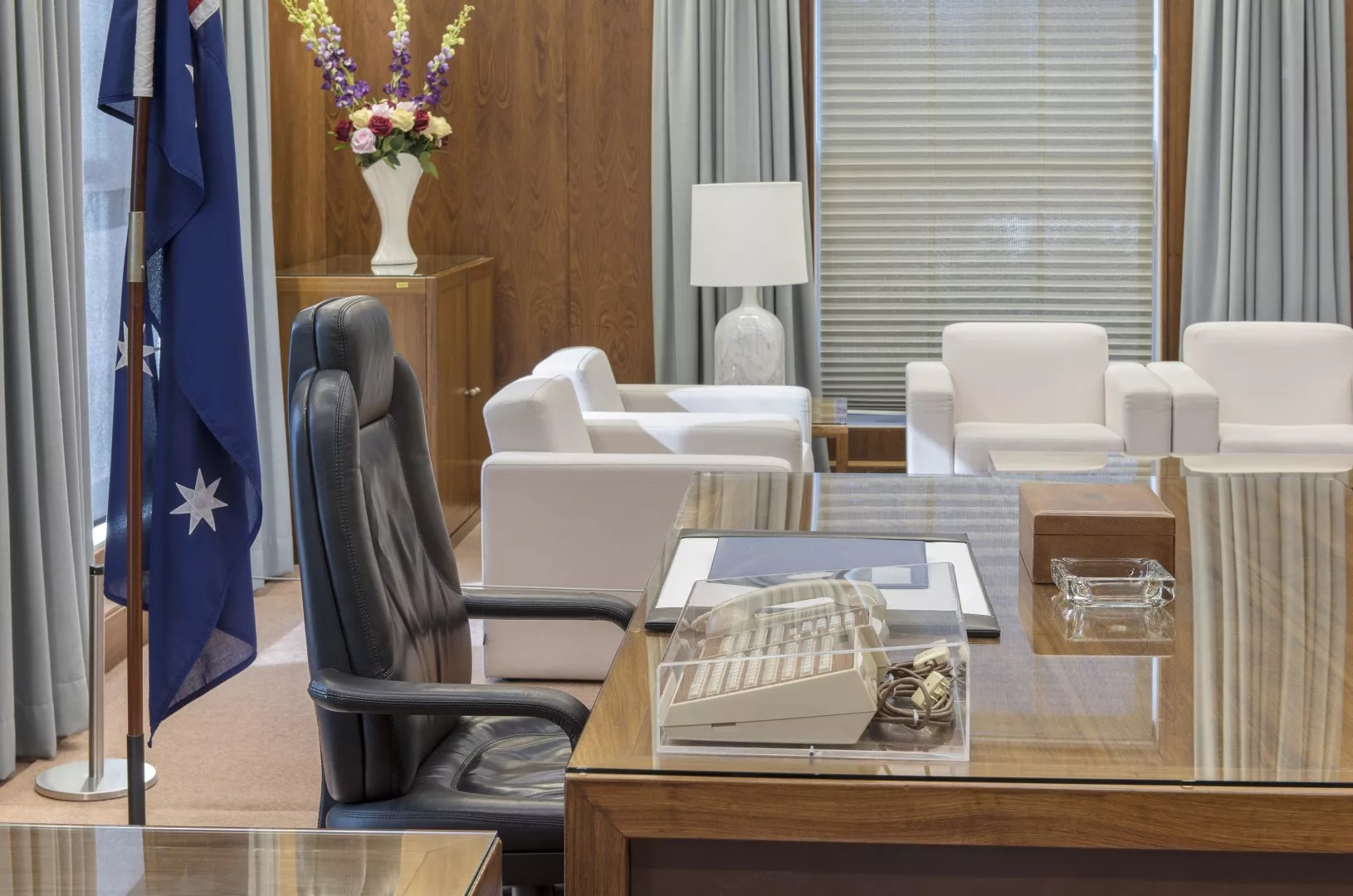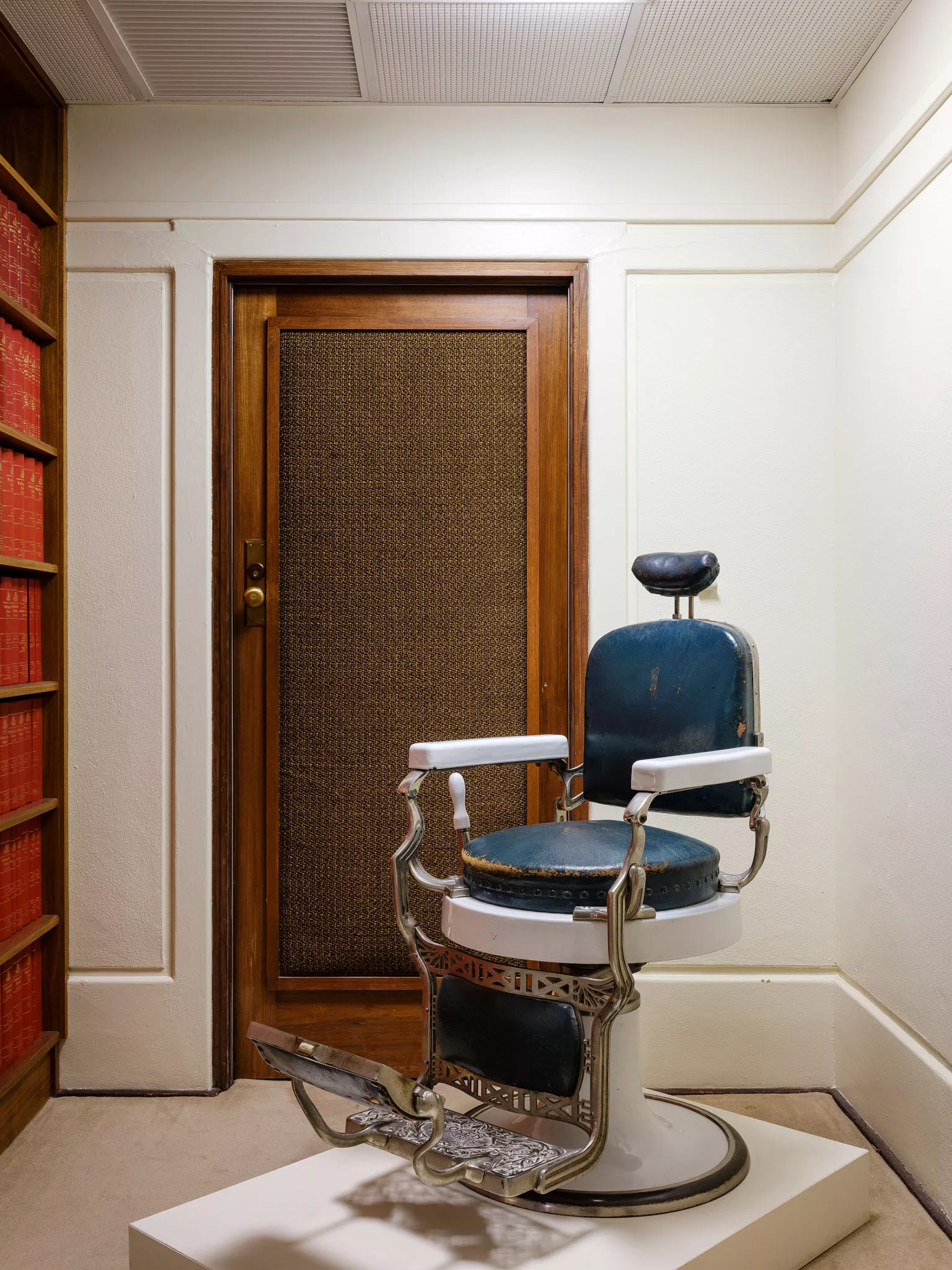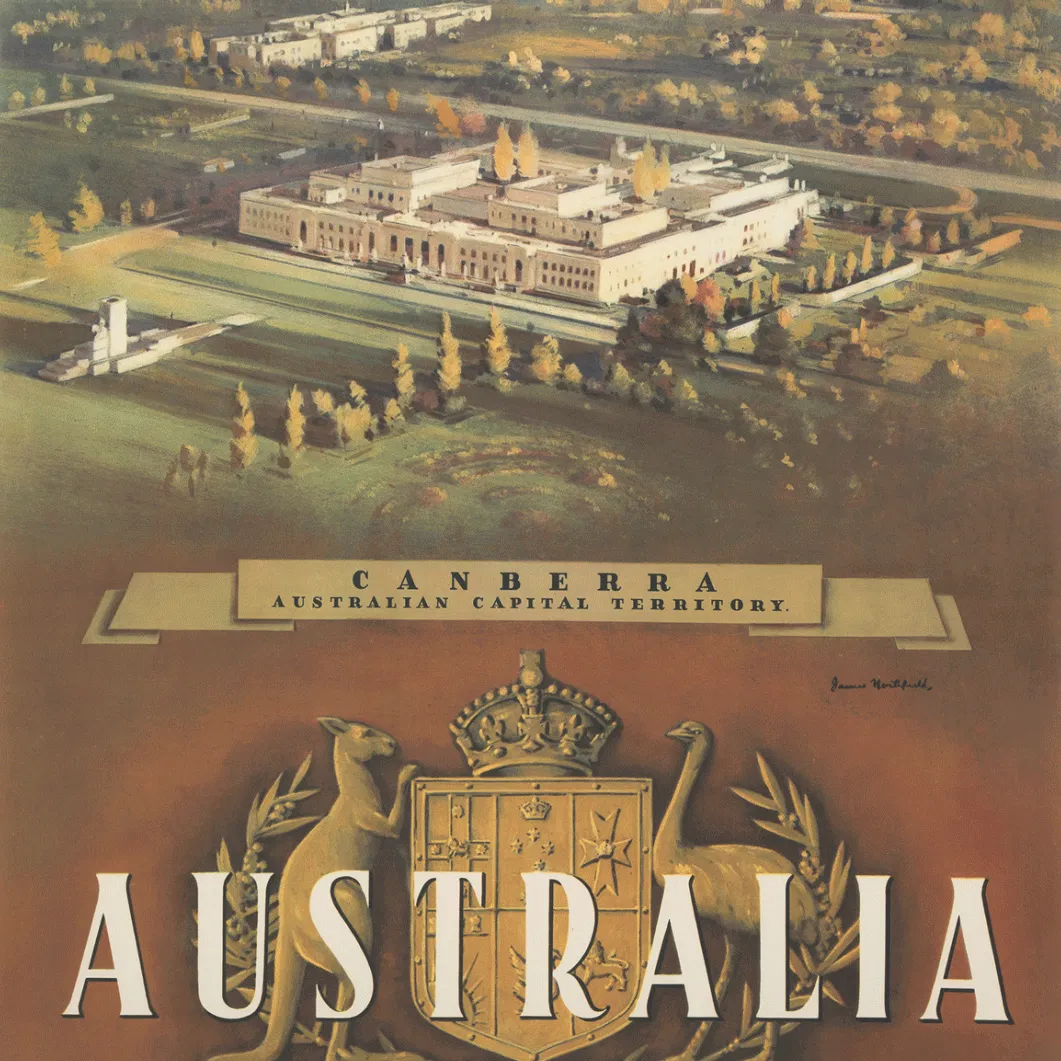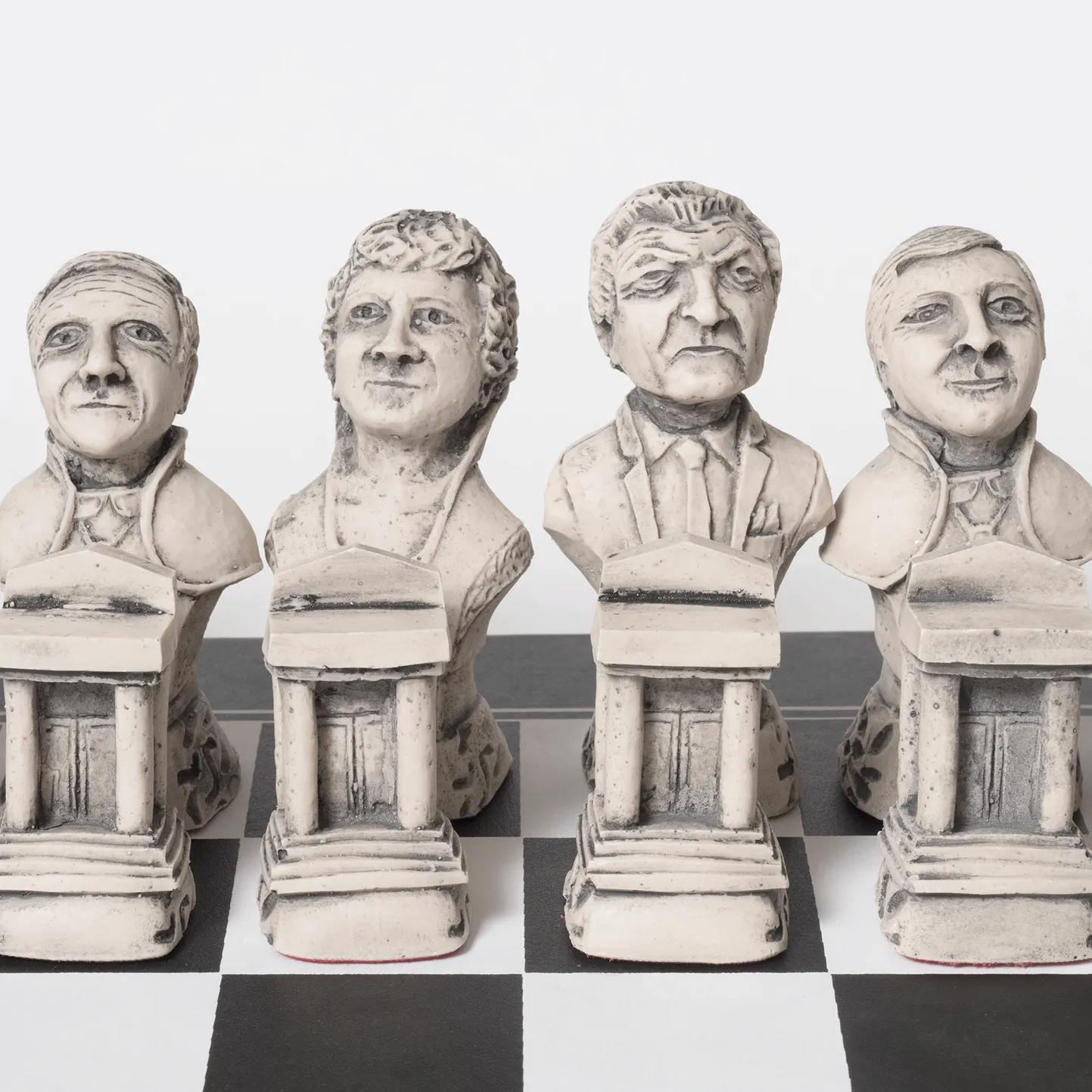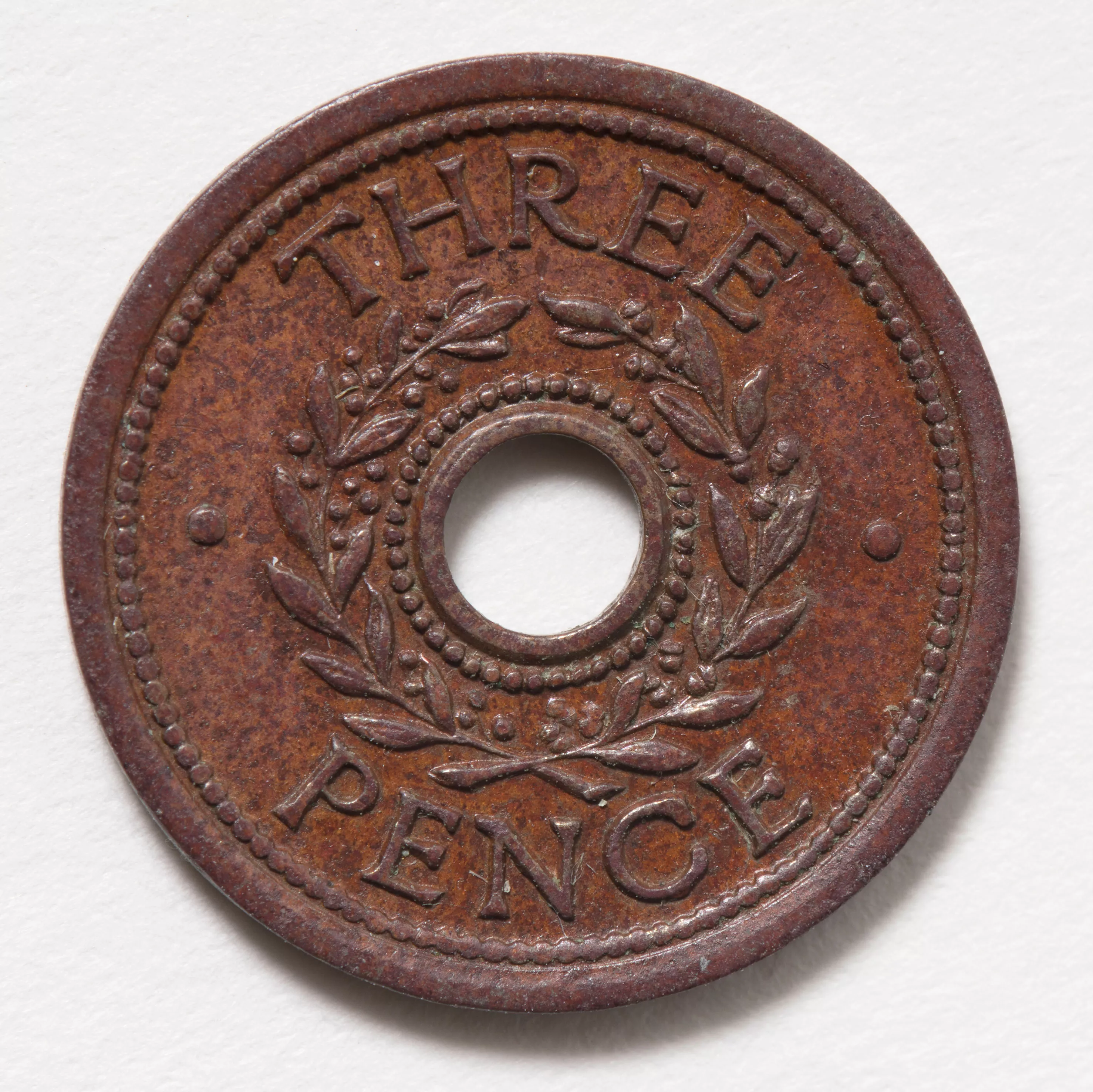Prime minister's desk
An expanse of desktop.
This commanding desk was used by three prime ministers – Gough Whitlam, Malcolm Fraser and Bob Hawke. Its size, physical and psychological impact and the quality of workmanship all reflect the significance of the prime minister's role as the leader of the government of the day. In use between 1972 and 1988, this desk replaced one designed in 1926 by architect John Smith Murdoch.
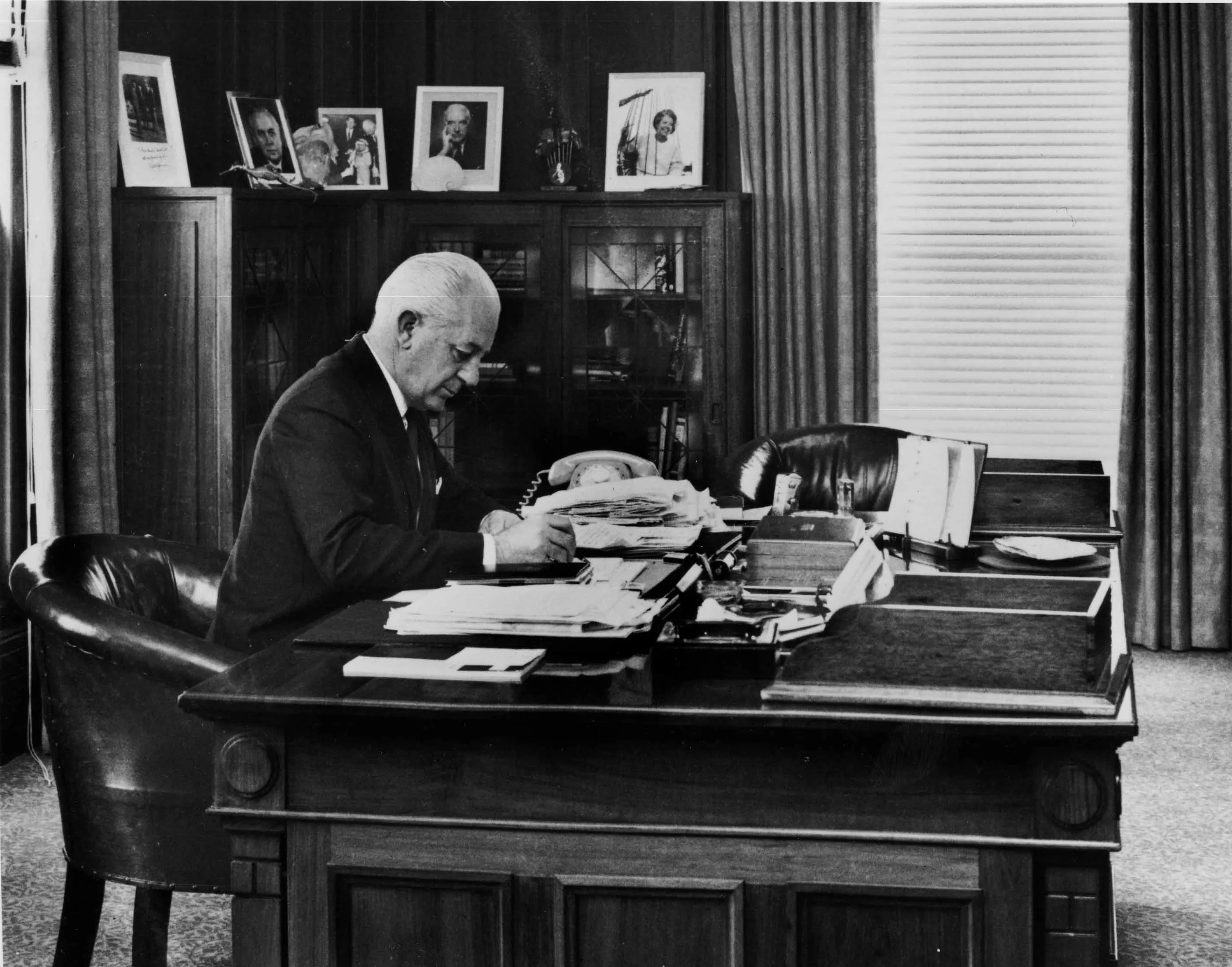
Prime Minister Harold Holt working at the original prime minister's desk created in 1926. This desk would have looked out of place in the 1972 renovation and was put in storage. Struck by the historical significance of the desk, Prime Minister Howard asked to use the desk in Australian Parliament House when he became prime minister.
Photograph National Library of Australia
The desk is authoritative and imposing – the expanse of the desktop creates a distance between the prime minister and visitors. For all its symbolic authority and power, the 2-metre-wide by 1.2-metre-deep desk is also very practical with built-in storage and a row of call buttons for summoning secretaries and advisors. Issues, policy and legislation that continue to affect our lives today were discussed across this desk.
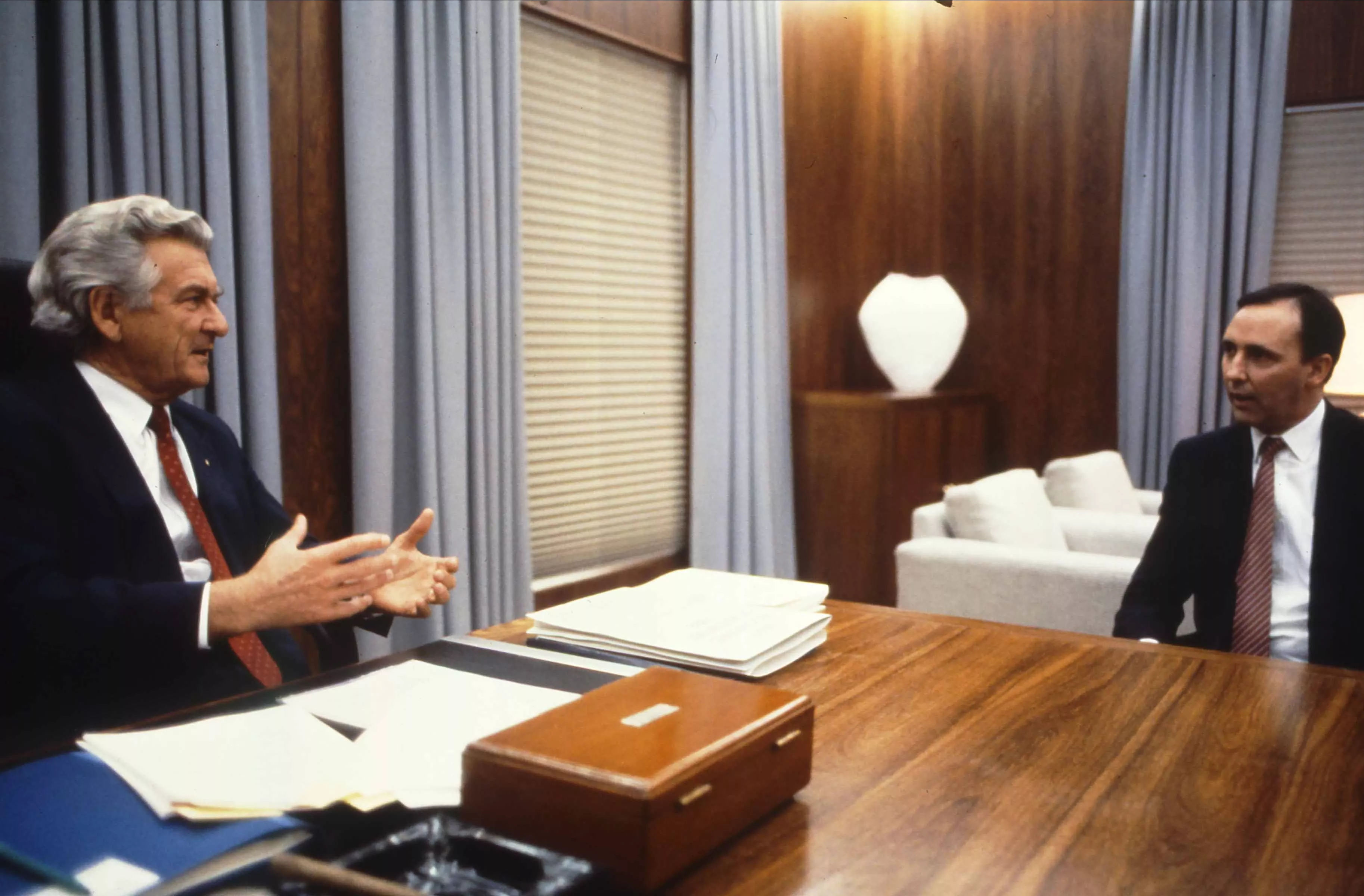
Prime Minister Bob Hawke and Treasurer Paul Keating in discussion at the prime minister's desk, 1988.
Photograph Robert McFarlane/Department of the House of Representatives
Like much of the furniture built specifically for the 1972 remodelling of the Prime Minister's Suite, the desk remained behind when parliamentarians shifted up the hill to the new Australian Parliament House.
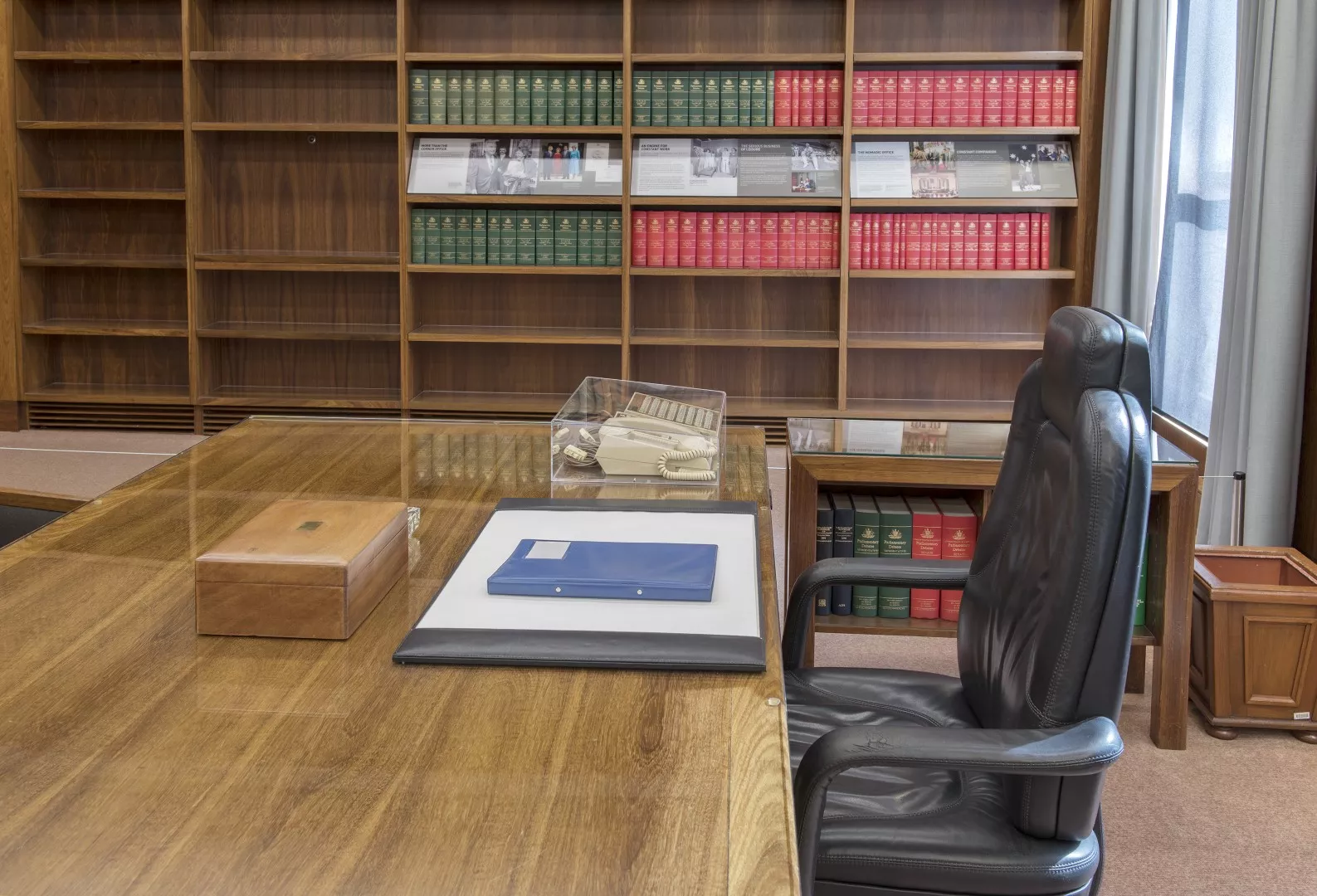
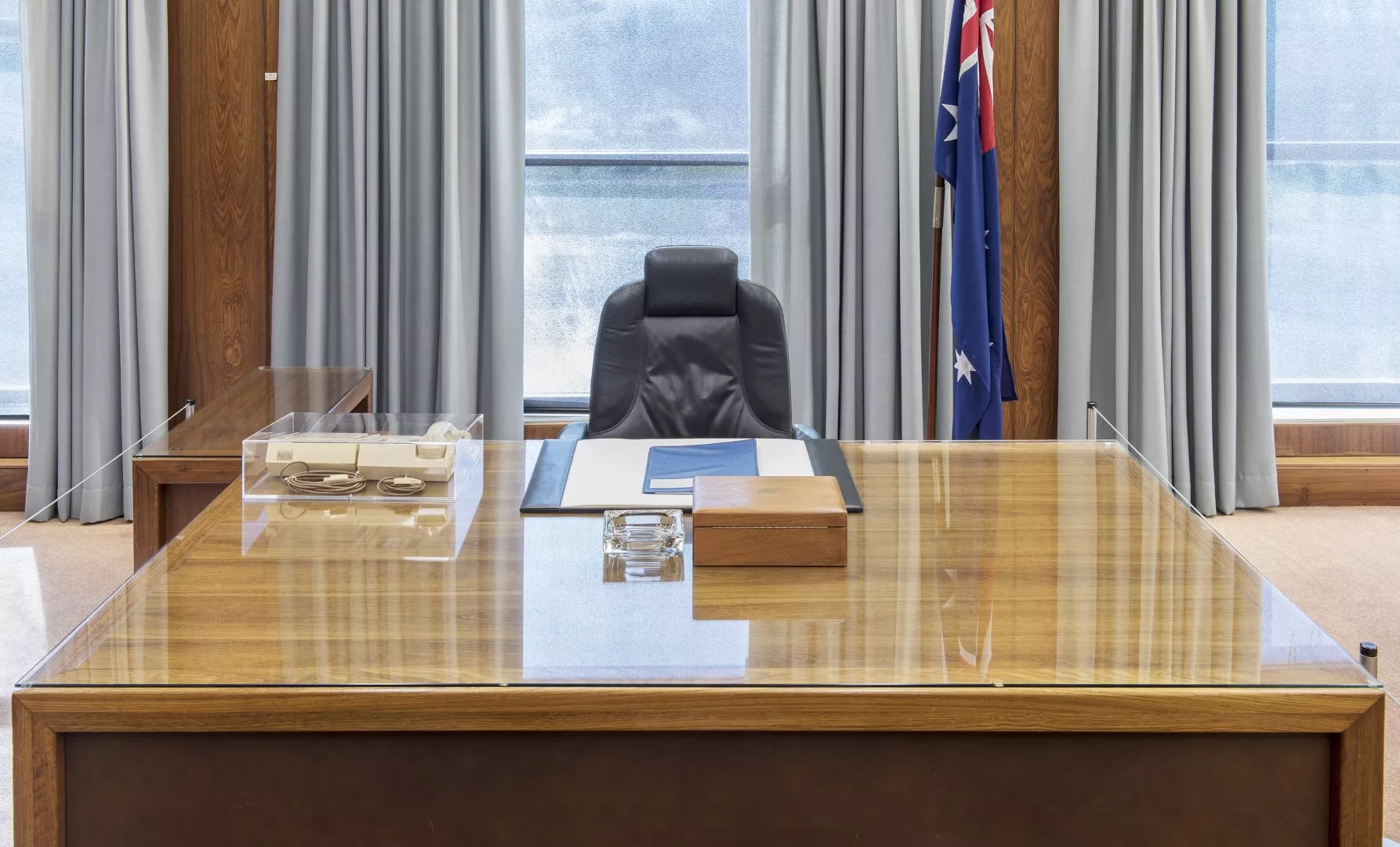
What consequential decisions occurred during Bob Hawke's prime ministership?
Significant policy decisions by the Hawke government passed over this prime ministerial desk, including the beginnings of deregulation of the Australian economy, the Sex Discrimination Act 1984, and the establishment of the Aboriginal and Torres Strait Islander Commission.
This desk also played witness to many memorable conversations and even job interviews. Stephen Mills recalled nervously sitting across the desk from Bob Hawke in 1986 while being interviewed for the job of speechwriter, '… there [were] these armchairs … I was gripping the arms so tightly that I actually pulled the arm of the armchair out of its socket slightly…' Happily, he got the job and evidence of the damage hasn't been discovered among the chairs in our collection … yet.

